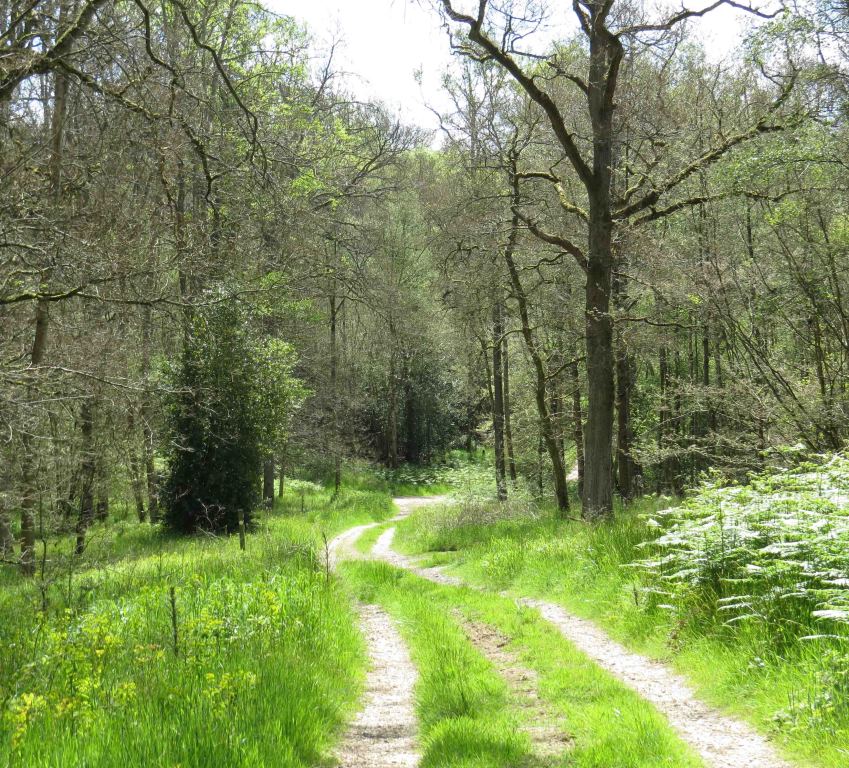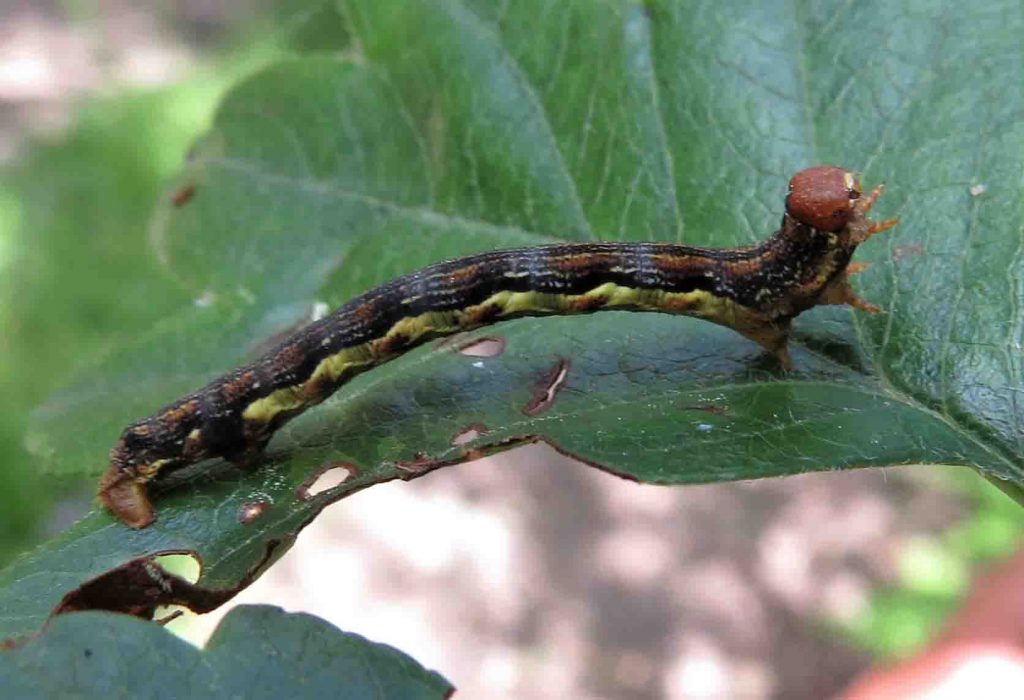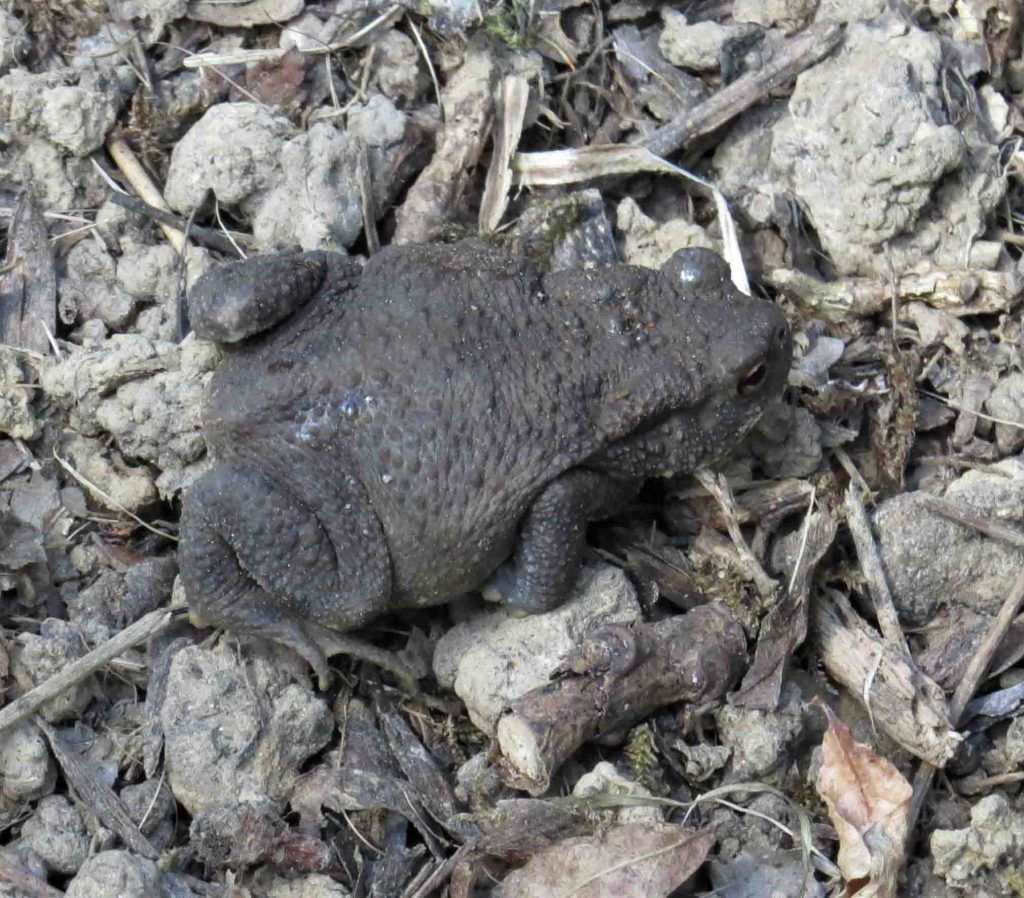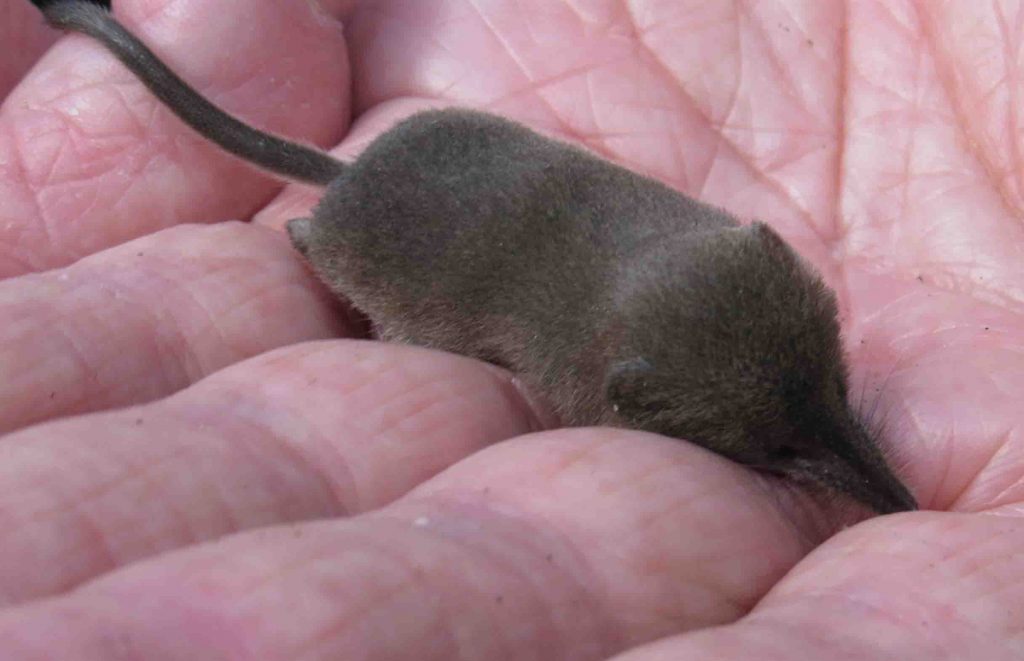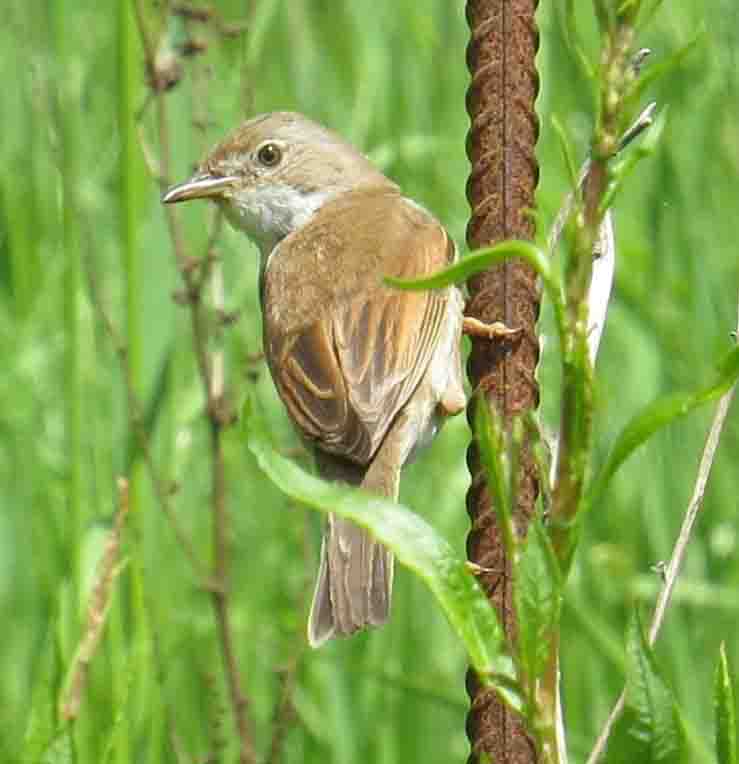John Lerpiniere led a walk to Miram’s Copse, starting from the Black Barn at Rushall Manor Farm, Bradfield, on the morning of Saturday 5 June. Also on the walk was John Bishop, who manages the woodlands. Swallows were flying round the farm buildings and a Yellowhammer sang from a nearby hedgerow. The group set out in warm sunshine along the track which leads through Rushall Copse and Long Copse. Bush Vetch, Greater Stitchwort and Cow Parsley were in flower at the side of the track. Entering the woodland, it was a shock to see leafless trees, particularly Hazel and Oak, making it seem more like February than June. There were caterpillars everywhere – dangling down from long threads and feeding on the remains of leaves. The small green specimens were thought to be Winter Moth caterpillars, while the larger dark ones with yellow markings and a brown face were Mottled Umber Erannis defoliaria, whose Latin name hints at its potentially devastating effect on woodland. A female Brimstone flew along the track, and Speckled Wood, Green-veined White and both male and female Orange-tip butterflies were also seen. The track ran briefly alongside the edge of the wood and a Roe Deer was glimpsed at the far side of the adjacent field. Common Figwort, Yellow Pimpernel, Sanicle, Woodruff and shiny-leaved Black Bryony were noted. A big flock of Crows flew up noisily from the woodland floor ahead. A track with Wood Spurge flowering in its wide margins led up through Miram’s Copse. Wood Spurge is the larval food plant of the Drab Looper, a Nationally Scarce little day-flying moth, which has one of its strongholds in the Pang Valley woodlands. Careful searching revealed several specimens of the little longhorn moth Nemophora degeerella but no Drab Loopers, so the search continued in a side ride which also had wide sunny margins with Wood Spurge. This search was more successful, and several little twinkling gold specimens were spotted, flying in the sunshine. John successfully netted one, so that people could have a closer look at a moth whose distinguishing feature is its complete absence of distinguishing features. In total, five Drab Loopers were counted in Miram’s Copse. Square-stalked St John’s-wort was found at the edge of the adjacent ditch, with Tutsan growing on the bank above. A prostate plant with tiny white flowers and square stems was identified as Bog Stitchwort. John Bishop then led some of the group to the edge of the woodland where there is a large swallow-hole. The fields below are on the Chalk, while the woods are on the Lambeth beds and the swallow-hole is just above the geological boundary. The group then reassembled at the edge of Long Copse. A little way back from the track was an impressive patch of about 50 Early-purple Orchids, with most a little past their best, but some still at their peak. The walk continued up along the edge of a fenced-in coppice plot. After cutting, the regrowth had initially been badly damaged by browsing deer, which had allowed more light to get in, which in turn had led to a surge of Wood Spurge. This proved to be the best place for Drab Loopers, with 15 seen. Also seen here were Silver-ground Carpet and Blood-vein moths. A corrugated metal sheet at the top of the plot was lifted carefully. Underneath were a family of about 6 shrews and a young Toad. The shrews were small with relatively long tails and were thought to be Pygmy Shrews. Returning to the main track, the group walked back to the Black Barn. A Whitethroat was seen in a bush at the side of the path near the end of the walk.
Pictures by Fiona Brown

